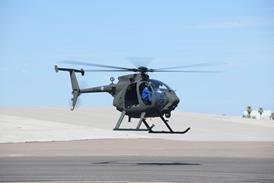THE HUMAN-FACTORS TEAM makes a large number of recommendations for action by the FAA and other agencies. There are eight main headings, but some basic demands, like the need for better information-exchange on incidents, is repeated in varying forms under several of them. The principle recommendations for each heading include:
Measurement of and incentives for safety
Improve the collection and sharing of safety information, particularly of circumstances leading up to accidents;
The US Federal Aviation Administration and National Transportation Safety Board should isolate the specific factors, which lead to human error;
The FAA should create incentives which reward better design, training or operational methods.
Management of Automation
Manufacturers' and operators' automation philosophies should be made easier for pilots to understand;
Operators' manuals, and all pilot training, should give better guidance on auto pilot use and disengagement, mode use, and automatic mode-change;
Auto pilots on all transport aircraft must be reviewed for circumstances under which they can induce hazardous situations, such as subtly introduced departures from the intended flight path, or low-energy flight. Design and training should then be changed;
Incidents involving departure from standard operating procedures should be studied to discover why crews do it, and when the effect was good or bad;
Flight crew situation awareness
The recommendations for training cover an extremely wide area of conventional flying knowledge and skills, indicating a serious concern that training is often below-par. Highlighted, however, are mode-awareness and the need to tailor training to automation systems in each aircraft type;
Better terrain-awareness systems are needed, and three-dimensional navigation systems should eventually replace two-dimensional ones;
Crucial automation controls, data-entry systems, mode information, and display terminology and symbology should be more standardised;
Data display should be reviewed for its effectiveness;
Pilots should be better educated in human factors;
Research must be done on the optimum workload and tasks to maintain pilot situational awareness.
Communication and co-ordination
Study air-traffic-control practices for situations, which are incompatible with highly automated aircraft;
The NOTAMS (notices to airmen) system must be overhauled to improve clarity and prioritisation. Charts, approach plates and meteorological data presentation should be reviewed.
Processes for design, regulation and training
The FAA should work with industry to draw up recommended practices for automated systems-design;
Flight deck certification should be more human-factor-orientated;
Training-standards minimums should be reviewed.
Criteria, regulatory standards, methods and tools for design and certification
Flight deck design should be evaluated during certification for susceptibility to design-induced error;
Auto pilot regulatory standards should be updated;
Standards for cockpit information- and warnings-display should be reviewed.
Knowledge and skills of designers, pilots, operators, regulators and researchers
"Make human-factors engineering a core discipline of the flight deck design activity";
Pilot training methods/programmes should be reviewed for validity in the light of modern flying/flight deck demands;
FAA regulators, inspectors and researchers should be better trained in human-factors design and operational requirements.
Cultural and language differences
Research is needed to identify if culture and language have an influence on flight deck safety;
Standardised and sympathetic to the needs of those for whom English is not a first language.
Source: Flight International























